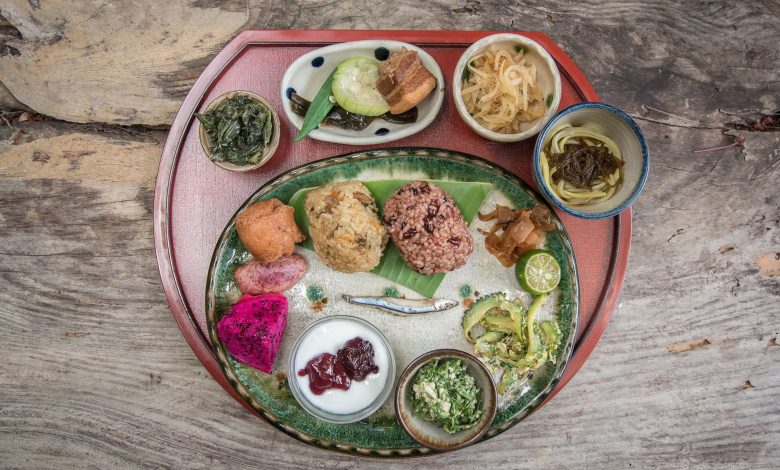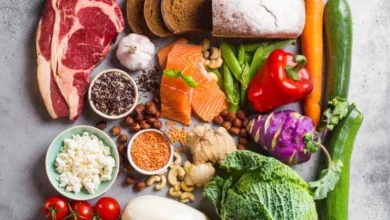Why the traditional Okinawan diet is the recipe for a long life

The Mediterranean diet is widely recognized as one of the world’s healthiest eating regimens, and for good reason. However, there’s another extremely healthful diet that’s sometimes disregarded: the traditional Okinawan diet, which consists mostly of plant-based foods, is high in antioxidants and phytochemicals—compounds found in plants that promote health—and is anti-inflammatory. In fact, compared to eating patterns in other regions of the world, the traditional Okinawan diet is linked to longer life expectancies.
One of the well-known “Blue Zones,” or places in the globe where the greatest percentage of individuals live to be 100 years of age or more, is Okinawa. The Okinawan diet has not received nearly as much investigation as the Mediterranean diet, but the nutritional concepts are valid, and more and more studies are showing how this diet can support good health. For instance, a study published in the journal Nutrients in 2023 found that participants who followed an Okinawan-based diet for 12 weeks achieved favorable changes in their gut microbiome in addition to losing weight and seeing reductions in their blood sugar, insulin, and cholesterol levels.
What is the reason for the health benefits of the traditional Okinawan diet? Numerous factors are involved.
Craig Willcox, a gerontology professor at Okinawa International University and the head of research and codirector of the Okinawa Research Center for Longevity Science, says, “It’s low in calories density and high in nutrient density and fiber.” It has a high concentration of antioxidants and other phytonutrients. It is anti-inflammatory and has a low glycemic load. “Chronic low-grade inflammation at the cellular level drives the aging process and age-related diseases such as heart disease, stroke, diabetes, and cancer,” says Willcox, explaining why this is significant.
The immune system benefits from the diet as well. Studies have revealed that consumption of Okinawan fruits and vegetables is associated with increased levels of IgA, IgG, and IgM antibodies, which aid in defending the body against bacterial and viral infections. Furthermore, there is increasing evidence that the nutrients found in Okinawan diets may support long-term brain health and lower the risk of age-related cognitive decline.
It’s the ideal diet if you’re interested in aging healthily, according to Willcox. “Many of these foods activate FOXO3, the longevity gene that inhibits inflammation and shortens telomeres.” (Telomeres are the protective caps at the ends of your chromosomes; they help decide how quickly your cells age because they stop the genetic material inside from unraveling.)
The diet’s origins and essential foods
One of the longest-living populations in the world has resided on Okinawa, one of Japan’s southernmost islands. This is thought to be connected to the traditional diet and way of life, according to Asako Miyashita, a New York City nutritionist who was up in Japan. “They eat small amounts of each food throughout the day, in moderation, and spend a lot of time outdoors.”
The traditional Okinawan diet has the highest carbohydrate content and the lowest fat content (particularly saturated fats) when compared to the Mediterranean diet and the DASH (Dietary Approaches to Stop Hypertension) plan. The macronutrient composition of the Okinawan diet really leans disproportionately toward high-quality carbs (such as sweet potatoes, various root vegetables, and leafy greens), accounting for 85% of the diet compared to 9% protein and 6% lipids, including omega-3 fatty acids.
Instead of rice, as in the Japanese diet, the main source of carbohydrates in the traditional Okinawan diet is the antioxidant-rich sweet potato (not just the orange kind, but also the purple and white ones). According to Willcox, “sweet potatoes are high-quality carbohydrates that don’t mess with your blood sugar levels.”
Large amounts of soy foods (such as soybeans, tofu, and miso soup), leafy greens (such as spinach, mustard greens, mizuna, and cabbage), legumes, root vegetables (carrots, taro, pumpkin, squash, and daikon radish), fish, seaweeds, mushrooms, fruits (like bitter melon, grapes, bananas, and green papaya), and smaller amounts of meat (especially pork) are among the other core foods. Sake and tea, particularly jasmine, are favorites. Garlic, soy sauce, ginger, turmeric, and bonito flakes are among the often used seasonings.
Indeed, a research conducted in the town of Ogimi, on Okinawa’s northern tip, indicated that the most often consumed foods were tofu and different kinds of seaweed. Numerous minerals included in seaweed support healthy electrolyte balance in the body and safeguard brain and neurological function, according to Miyashita.
According to David Katz, co-author of How to Eat: All Your Food and Diet Questions Answered, a preventive medicine specialist, past president of the American College of Lifestyle Medicine, and adherent to the fundamental theme of healthy eating—real food, mostly plants in a sensible, balanced assembly—this diet is extraordinarily healthful. “Eating healthily keeps everything functioning well, which keeps you functioning properly. You’re basically detoxifying every day and improving the engine when you fill up with quality fuel.
The idea of using food as medicine is another significant feature of the traditional Okinawan diet, according to Willcox, coauthor of The Okinawa Program: How the World’s Longest-Lived People Achieve Everlasting Health—and How You Can Too. Medicinal uses of plants, especially spices and herbs, are common in Okinawan traditional medicine.
For instance, according to Miyashita, jasmine tea is known to modify the autonomic nervous system in ways that have a calming impact. Furthermore, studies have demonstrated that consuming antioxidant-rich Ishimaki tea on a daily basis for three months will improve lipid abnormalities and lower blood pressure. Ishimaki tea is manufactured from extracts of Ooitabi leaves, a plant endemic to Okinawa.
The traditional Okinawan diet is conspicuously devoid of processed foods, refined carbohydrates, and large amounts of red meat. Furthermore, according to Keith Ayoob, an associate professor emeritus of pediatrics at the Albert Einstein College of Medicine and a nutritionist in New York City, “there’s not a lot of dairy because they didn’t have animals to produce it.”
According to Ayoob, “the Okinawan diet shares similarities with the Mediterranean diet in that it was not intended to treat a chronic health condition.” “It simply became a part of their culture as it developed.”
Bringing your mind to the table
The Okinawan way of thinking about food is partly responsible for the magic of the traditional diet.
The Okinawan people adhere to a philosophy known as hara hachi bu, which promotes stopping eating when one feels eighty percent full. According to Ayoob, “it’s a really good recommendation because you might feel 100 percent full in 15 or 20 minutes, but you might feel 80 percent full now.” This is because it requires that amount of time for your brain to recognize fullness.
In addition to minimizing overindulgence, this approach permits a mild kind of natural calorie restriction that promotes metabolic health, healthy digestion, and weight control. Additionally, according to Willcox, a diet that is mostly plant-based aids with satiety and weight control because it is high in nutrients, low in calories, and high in volume.
According to Katz, “Okinawans have traditionally been lean, which is healthy.”
The traditional Okinawan eating style has been replaced in recent decades by a more Westernized one. During World War II, the American soldiers may have introduced the pink canned pork product Spam to Okinawa, where it was rapidly incorporated into popular regional delicacies like champuru, a stir-fried dish. Since then, Okinawa has become increasingly accustomed to using white rice and eggs, and the island has seen an increase in the number of fast-food restaurants. It should come as no surprise that Okinawa has seen an increase in the prevalence of obesity and hypertension recently.
Experts claim that a return to the traditional Okinawan cuisine would be extremely beneficial for people’s health, both on Okinawa and overseas. It also benefits the environment. According to Katz, “any conversation about nutrition and health these days has to include planetary health and sustainability.” The Okinawan diet has been a way of life for many generations. It is enduring.




